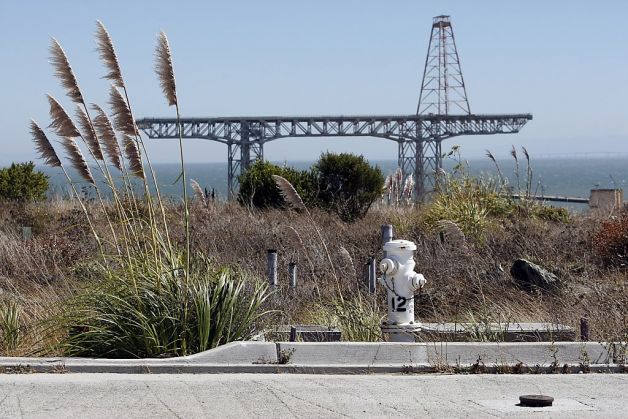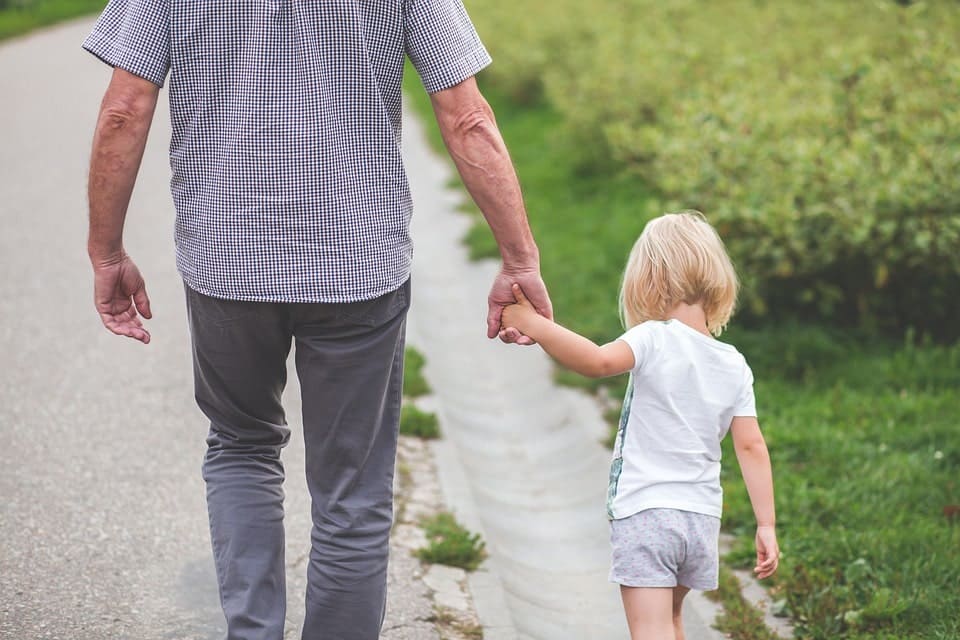
There is nothing more gratifying than moving into a new home. After spending several stressful months preparing to move, getting settled in your new house can seem like the ultimate reward. But even as you spend your first few days designating and organizing all your rooms, the reality of being away from your friends and your old neighborhood will definitely kick in. If you have moved too far away from friends, then it would be time for you to make new ones. For the shy person, making friends or meeting with neighbors could be more of a challenge.
There are many ways to meet new people, such as attending social events, joining local groups, and volunteering in your community. Making friends after a relocation can be difficult, especially if you’re going to a place where you don’t know many people. But it’s crucial to keep in mind that it’s common to feel isolated or lonely after a move and that meeting new people takes time and effort. Here are a few suggestions to get you out and fraternize with new people in your new neighborhood.
Moving and Friendship
Forming new friendships may be both thrilling and difficult when you move to a new location. Moving to a new city can be a whirlwind of emotions, but joining a local book club can be a game-changer in helping you find friends and feel more at home. On the one side, relocating can provide you with the chance to network and meet new people. On the other hand, it can be difficult to say goodbye to the friends and neighbors you have established in your prior residence.
Host a Housewarming Celebration
Food is the quickest path to someone’s heart (and drinks). So, host a housewarming party and invite every one of your neighbors after you’ve unpacked and gotten situated. Include lots of food. Over a few drinks, try to establish a rapport with your new neighbors. You’ll make a lot of new acquaintances. And while many of them won’t amount to much more than passing acquaintances, you’ll also run with a few people who just might become your new best friends.
If you have children, you would be surprised to know what little friend magnets your kids are. Whether it is a school, social event or even at the grocery store, you are almost guaranteed to have other parents come up and talk to you. After weeks of meeting up at the same places in your neighborhood, perhaps you two can start exchanging numbers and maybe carpool to these events. Not only would it save you both on gas when alternated, but it would also strengthen the friendship between the parents and the kids.
The Psychology of First Impressions
You’ve heard it before: “You never get a second chance to make a first impression.” But have you ever stopped to consider the science behind this age-old wisdom? The first seven seconds in which you meet someone are crucial, and neuroscience reveals that a person’s brain makes 11 major decisions about you in those seven seconds. This isn’t just social fluff; it’s hardwired human instinct. So, how can you turn this to your advantage when you’re the new face in the neighborhood? The key lies in understanding the cognitive biases that shape first impressions. Being aware of these can help you navigate initial interactions in a way that sets the stage for meaningful connections.
When you meet new neighbors, your attire, body language, and even the tone of your voice send signals that contribute to their first impression of you. A warm smile, open posture, and attentive listening can go a long way in establishing initial trust. But here’s the kicker: first impressions also have a ‘stickiness factor.’ This means that once formed, they are hard to shake off. So, if you’re attending that community clean-up or housewarming party, remember that these are not just social events but opportunities to lay the foundation for future friendships. Make those first seven seconds count by being genuinely yourself, while also being conscious of the silent judgments that human brains are wired to make.
Visit Regional Events
On holidays, festivals, and other occasions, local events are held in the majority of neighborhoods. Make an effort, and if you can, offer to help with event planning. It could feel odd at first, especially if you have to travel alone. However, you’ll quickly get some acquaintances and begin making new pals.
Another way in which you can grow your friend list is by becoming an active member of your child’s school and the PTA. You should volunteer regularly at the school and assist in organizing and attending most of the events as well. Your involvement would put you in touch with other parents and put you at the crest of what is going on in your child’s life when they are not home.
Your personal hobbies can also lead you to new acquaintances who also share your interests. A book club isn’t just about discussing novels; it’s a unique platform where you can meet people who share your interests and even your taste in literature. You can join the library in your neighborhood or enroll in a class where you can find people to network with. Of course, nothing beats knocking on your neighbor’s door and introducing yourself and your family to them. You would find that strong neighborly ties can commence a neighborly watch when either party is not home. The more events you attend, the more quickly you’ll notice that new acquaintances turn into new friends.
- Engage in community sports; they are often free and a great way to meet people. When you’re in a new place, don’t underestimate the power of community sports; they’re not just for kids but a fantastic way to meet your neighbors.
- Attend local government meetings to network and understand community issues.
- Utilize apps like Meetup to find local events that align with your interests.
- Consider coworking spaces to meet professionals and expand your social circle.
- Local charity events not only contribute to a good cause but also offer networking opportunities.
Leveraging Local Online Communities
In the digital landscape of today, your smartphone serves as a dynamic tool to effortlessly connect with your new neighbors. Ever considered the untapped social circle just a finger tap away in your local community? Platforms like Nextdoor and specialized community groups on Facebook provide a robust space to network, all from the luxury of your own living space. These digital hubs are your ultimate resource for the latest local events, top-rated services, and crucial neighborhood alerts. So take advantage of this social toolkit to inject new life into your local interactions.
If you’re wondering, “Where do I even begin?”, the answer is quite simple. Make an impact by introducing yourself in these online forums. A brief announcement stating you’re new and eager to contribute can resonate well with community members. But here’s something to really consider: active participation is key. Join in on discussions, impart useful advice, or even spearhead an online event such as a trivia game. The more you engage, the more your name becomes familiar in your new community. Consider it as sowing goodwill in an unfamiliar but promising social terrain.
And there’s even more. Many of these platforms feature marketplace sections for commerce among neighbors. Picture this: you unload your old coffee table and discover the buyer is a fellow coffee enthusiast. Or perhaps you assist in locating a lost pet based on a community post. Actions like these not only earn you kudos but also lay the foundation for enduring friendships. Don’t hold back—plunge into this reservoir of digital opportunities and witness your social life flourish in unexpected ways.
Explore Your New Neighborhood On Foot
Moving to a new city can be exciting, but also a bit daunting. One of the best ways to start feeling more comfortable in your new neighborhood is to introduce yourself to your neighbors and others in the community.
Going out to meet people can be a fun and exciting way to connect with others and make new friends. Discovering communal areas in the neighborhood will enable you to meet more locals and increase your chance of doing so. A simple method to meet new people and discover more about your neighborhood is to go for a walk in the morning or the evening. If you have a dog, you’ll already be walking. Keep an eye out for other neighbors who have dogs, and whenever you go into them in the neighborhood, strike up a conversation and say hello. Making new friends takes effort, patience, and a willingness to step outside your comfort zone and engage with others.

The Role of Pets in Community Building
Ever noticed how a simple walk with your dog can turn into a mini-social event? Pets, especially dogs, are like social magnets in a community. Whether it’s the dog park, a pet-friendly café, or even the vet’s waiting room, these spaces become social hubs where pet owners naturally converge. The beauty of this is that your pet does half the work for you. They attract attention, break the ice, and give you something in common with others right off the bat. So, if you’re new in the neighborhood, your pet could be your ticket to faster social integration.
Owning a pet does more than just break the ice; it can also strengthen community bonds in unexpected ways. Pet owners often display heightened empathy and a willingness to assist neighbors, perhaps a byproduct of caring for their animals. This emotional acumen serves as a strong basis for meaningful, lasting friendships. Consider a situation where your neighbor, who is also a pet owner, encounters an emergency and needs someone to care for their animal. By stepping in, you not only gain their appreciation but also pave the way for future acts of kindness and deepen your emotional connection.
Don’t underestimate the power of online pet communities either. Platforms like Pawtrack or local Facebook groups can be goldmines for meeting like-minded people in your area. These platforms often share valuable information, from the best local vets to upcoming pet-friendly events. Engaging here isn’t just scrolling; it’s active community participation. Share your pet’s milestones or offer advice on a topic you’re knowledgeable about, like dog training or pet nutrition. You’ll find that these digital interactions often translate into real-world friendships, enriching your social life in your new neighborhood.
Have a Yard Sale
Consider the scenario where you have more products to sell than can be ostensibly advertised on social media markets. When you move, you suddenly realize how much crap you have.
A yard sale will not only assist you in getting rid of some of that clutter, but it will also act as an open invitation for your neighbors to stop by, speak, and perhaps even make a purchase from you. Use their purchase as a conversation starter the next time you encounter them if they do make a buy.
A yard sale is also a great opportunity to showcase your interests and hobbies. When you make contact with a neighbor who shares your enthusiasm for baseball, your baseball cards may at last prove useful. What about all the extra yarn you sell?
If you see your neighbors may use some assistance, lend a hand
Random acts of kindness frequently result in deep conversations. By providing assistance to a neighbor, you can demonstrate that you are a good neighbor. For instance, shovel snow in front of a neighbor’s house if you are shoveling snow in front of your own, or assist an elderly neighbor in carrying groceries to their door. You should personally deliver a neighbor’s mail if you unintentionally obtain it, as opposed to just dropping it in their mailbox or slipping it under the door.
Finally, moving into a new neighborhood also requires that you familiarize yourself with the business places that are within your neighborhood. The last thing that you want to happen is for your car to start experiencing problems, and you do not have a clue where the nearest service station is. Make the most of your weekends by getting a map and driving around your neighborhood with your family. Your drive could lead you to the locations of your favorite restaurants and even a few parks where you can go to spend some quality time with your family.
Navigating Diverse Neighborhoods
America is often described as a melting pot, a place where diverse cultures blend yet retain their unique flavors. When you move to a new neighborhood, understanding these cultural nuances isn’t just polite; it’s essential for forming lasting relationships. Imagine the richness of experience you’d miss out on if you didn’t venture beyond your comfort zone. Research shows that neighborhoods with a high level of cultural diversity tend to be more vibrant and resilient. So, how do you navigate this diversity?
Before you step into a community gathering or approach a neighbor’s front door, make sure you’re well-versed in the cultural customs that may differ from your own. For instance, maintaining eye contact could be viewed as disrespectful in certain cultures, while a strong handshake is standard in others. Also, when organizing community activities, pay close attention to religious and cultural holidays. This attentiveness to cultural nuances will not be overlooked. According to research in the Journal of Cross-Cultural Psychology, people who show cultural sensitivity are more likely to earn trust and favor.
Let’s consider Jane, a new resident in a predominantly Asian neighborhood. She took the time to learn basic greetings in various Asian languages. The result? Her neighbors were touched by her effort, leading to invitations for home-cooked meals and cultural celebrations. Jane’s experience isn’t unique. Multiple testimonials highlight that a little cultural sensitivity can go a long way in not just making acquaintances but forging friendships that last a lifetime.
Participate in Community Clean-up Initiatives
Participating in community clean-up activities does more than just improve the appearance of the neighborhood; it fosters a sense of community and opens the door to new friendships. Working with other members of the community toward a common objective builds strong ties and a shared commitment to making a positive difference.
Aside from the immediate rewards, the ties built during clean-up efforts might last beyond the event itself. You might meet neighbors who are keen to get involved in additional community activities, such as event planning, campaigning for local improvements, or resolving common concerns. Working together creates a firm foundation for continued collaboration and friendship, forming a network of supportive individuals committed to the well-being of your new community.
Share Home-Cooked Treats
Sharing home-cooked treats with your new neighbors is more than just a food exchange; it provides an opportunity to connect and build trust. Baking and serving homemade cookies, muffins, or other delectable snacks shows attention and care, giving a favorable impression. This act of kindness acts as a great icebreaker, sparking conversations and cultivating a sense of community in your new neighborhood.
Discussions about recipes and cooking techniques can lead to the discovery of common culinary interests, the exchange of tips, and the acceptance of invitations, all of which can lead to deeper relationships and the formation of friendships. This act of kindness can have a cascading effect, prompting neighbors to reciprocate and creating a warm and welcome environment of culinary exchanges that add to a sense of belonging and a supportive network within the neighborhood.
Just Be a Good Person
Above all, being a good neighbor is the first step in building friends with your neighbors. Be considerate of your neighbors by waving to them when you see them, following any posted rules in the area, and saving the fireworks for the Fourth of July. Treat your neighbors with respect and try to live by the Golden Rule.
Being a good neighbor is essential to establishing and sustaining a good relationship with others in your neighborhood, even if you have no interest in making friends. Even though it may not be as immediately beneficial, having positive relationships with your neighbors will help to make your house feel like a home for many years to come.
How Long Does It Take To Make New Friends
In terms of personality, social abilities, and the social environment, there is a wide range in how long it takes to create new acquaintances. Making new acquaintances might happen quickly for some people and take longer for others.
Generally speaking, becoming friends with new people can take a few weeks to a few months. Though everyone is unique, it’s crucial to keep in mind that some people may take longer to adjust to novel social circumstances.
It’s also vital to remember that the caliber of your friendships matters more than their quantity. Being patient with yourself and not putting too much pressure on yourself to create new acquaintances right away are key. Always keep in mind that developing trust and closeness takes time and work, and that it’s normal to initially feel a little hesitant or anxious.
It may seem difficult to make new friends in a new neighborhood, but there is no magic trick to success.
It is entirely possible for you to make new, happy friendships, and having friends that are supportive of your family may be very helpful as you begin your new life, regardless of what you may have experienced in the past.
Through a meet-up group or social network, you can increase your social circle and find like-minded individuals. Remember that every person is different and that building friendships and trust takes time. It’s acceptable to initially feel a little uncomfortable or uneasy, but try to retain a positive attitude and remember that this is normal.
Nurturing Friendships Over Time
You’ve moved in, met the neighbors, and even attended a few community events. But what now? Friendships, much like plants, need consistent care to grow. The initial meet-and-greet is just the starting line in the marathon of friendship. It’s easy to get caught up in the excitement of new connections, but the real value lies in nurturing these relationships over time. Think of it as an investment; the more you put in, the higher the returns in terms of emotional support, trust, and community involvement.
Consistency is key. Regularly check in with your neighbors or newly made friends. It could be a simple text asking how they are or offering to help with something you know they’re involved in. For instance, if you’ve met at a community clean-up, perhaps you could organize another one and invite them. These consistent interactions build a rhythm, a sort of friendship cadence that turns acquaintances into lifelong friends. It’s not just about being there in good times but also offering a shoulder during the tough ones. This creates a bond that’s not easily broken.
Shared experiences are the cornerstone of lasting friendships. Whether it’s a neighborhood potluck, a book club, or a local charity event, participating in activities together creates memories and stories that you both will cherish. It’s these shared narratives that deepen your connection and make your friendship resilient to challenges. So, the next time there’s a community event, don’t just mark it on your calendar—invite your new friends and experience it together.
| Resources For Moving | Storage Units Near You | Find Storage In Your State |
|---|---|---|




Leave a Comment